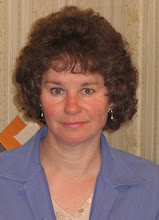Microsoft Office PowerPoint 2007—A How To Guide
GETTING STARTED
What pops up is a large slide on the screen. Two boxes sit within this first slide. One says, “Click to add Title” and the other, smaller one reads, “Click to add Subtitles”. In the left-hand margin is a small version of this same slide.
Add text and or retrieve an image from a search engine or add your own pictures from a picture file. You can also insert charts, tables, graphics or media clips. Just click on the icon you’re interested in adding.
When finished with the initial slide, click on “Next Slide” and fill it. Continue until you have all the slides you want.
ANIMATIONS
Select Animations tab. There are several animation options to choose from and you can pick a different one for each slide. To the far right of the toolbar, under Advance Slide, click on the box that says “Automatically After” and put in a time—either seconds or minutes—depending how long you want each slide to show. Also, be sure to unclick “On Mouse Click” on every slide.
SOUND/AUDIO
Go to Insert and (to the far right) click on Sound—choose Record Sound. You’ll need a microphone and headphones.
Once you click on Record Sound, a box will pop up. Click on the red button and begin reading your text. When you’re done speaking about the first slide, click the red button again. Length is recorded so you know how long your audio is per slid. Simply cancel to re-record if you’re not happy with the recording.
Remove the megaphone or sound symbol by dragging it off each slide.
For further information, go to http://atto.buffalo.edu/registered/Tutorials/talkingBooks/powerpoint.php http://www.videojug.com/film/how-to-create-a-talking-book-in-microsoft-office-powerpoint-2003 http://atclassroom.blogspot.com/2007/04/talking-powerpoint-books-using.html
I incorporated talking power points in my English Fundamentals classroom this spring by first having my students write five-paragraph essays about “Where in the World” they want to travel. Once they finished the writing piece, they put together talking power points. Most of them were familiar with power points, but none of them had ever created one with sound.
Power points are so versatile. Other ways students can use them include: creating a summary or character analysis of a book recently read, defining terms/vocabulary in any subject matter, as a teaching tool to learn the values of coins and bills, figuring out how to tell time, creating social stories, to note the steps of a specific recipe and as part of an oral presentation for (again) any subject.
What this Blog is All About: Welcome to Mrs. Mitchell's blog! This blog is an educational and informatinal resource for fellow teachers, students who have disabilities and their parents. I am using it as a means to stay connected with my students and to inform others about the trends and happenings in Special Education and assistive technology. If you have any questions, feel free to contact me. In the meantime, thanks for checking it out!
Just for Teens--Recommended sites to challenge, educate and entertain
About Me

- Mrs. Mitchell
- Who doesn't like a challenge? Since studying to become a teacher, I've met up with all sorts of them--big and small--which has forced me to look at myself, face my fears, rejoice in each success and learn from my mistakes. The idea of being the teacher of record was initially daunting and overwhelming, but I know I've made strides over the past year-and-a-half and I want to keep on learning and improving. Although I come across as reserved and quiet, there has always been a part of me that wants to be seen and heard. Teaching is one avenue that fulfills these desires. There are many facets of the job and the students are of course the best part. The thing I love about Special Education is that it's individualized to meet the needs of each student. In this way, it's self-paced, depending on the skill level of every child. Simply put, I love my job. I enjoy building rapport with students and I strive to make learning fun. I believe it's my job to help them become responsible people who can think critically. To do for them what they can do for themselves limits them. And if I limit them, I'm not doing my job.
Modification, Assistive Technology and Disability Information
- http://www.gatfl.org/LearningDisabilitiesGuide/tabid/456/Default.aspx
- http://atclassroom.blogspot.com/2006/09/electronic-text-finding-text-on.html
- http://atclassroom.blogspot.com/2009/10/disability-manners.html
- http://www.ldresources.com
- http://www.ldonline.org/ld_indepth/technology/technology.html
- http://www.greatschools.net/cgi-bin/showarticle/2488
- http://udltechtoolkit.wikispaces.com